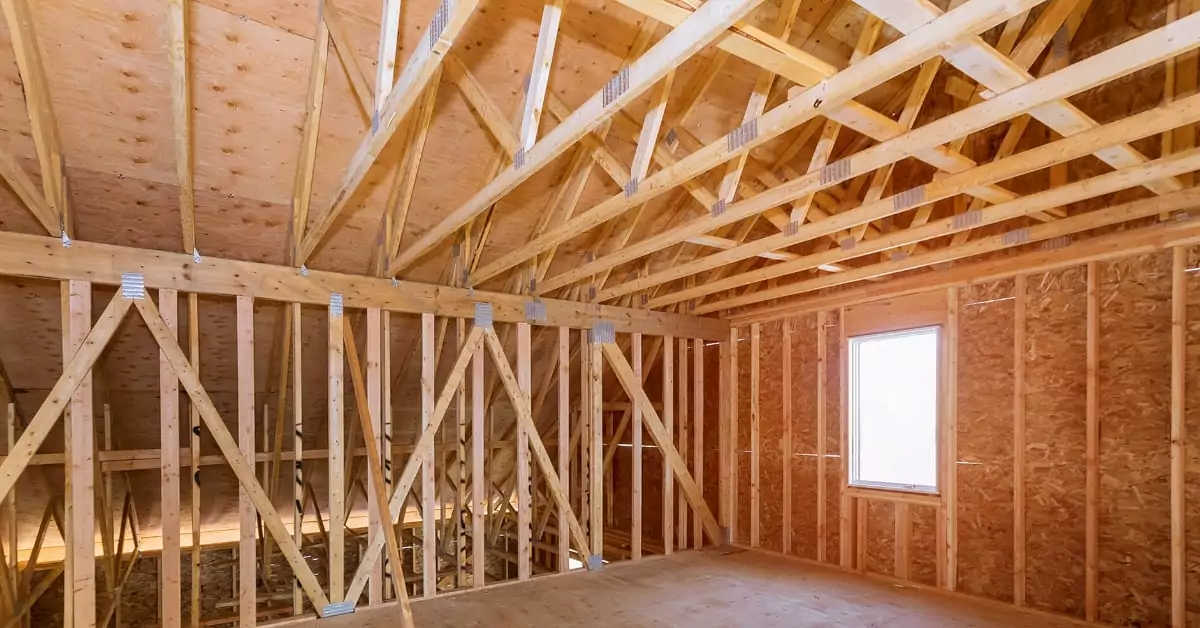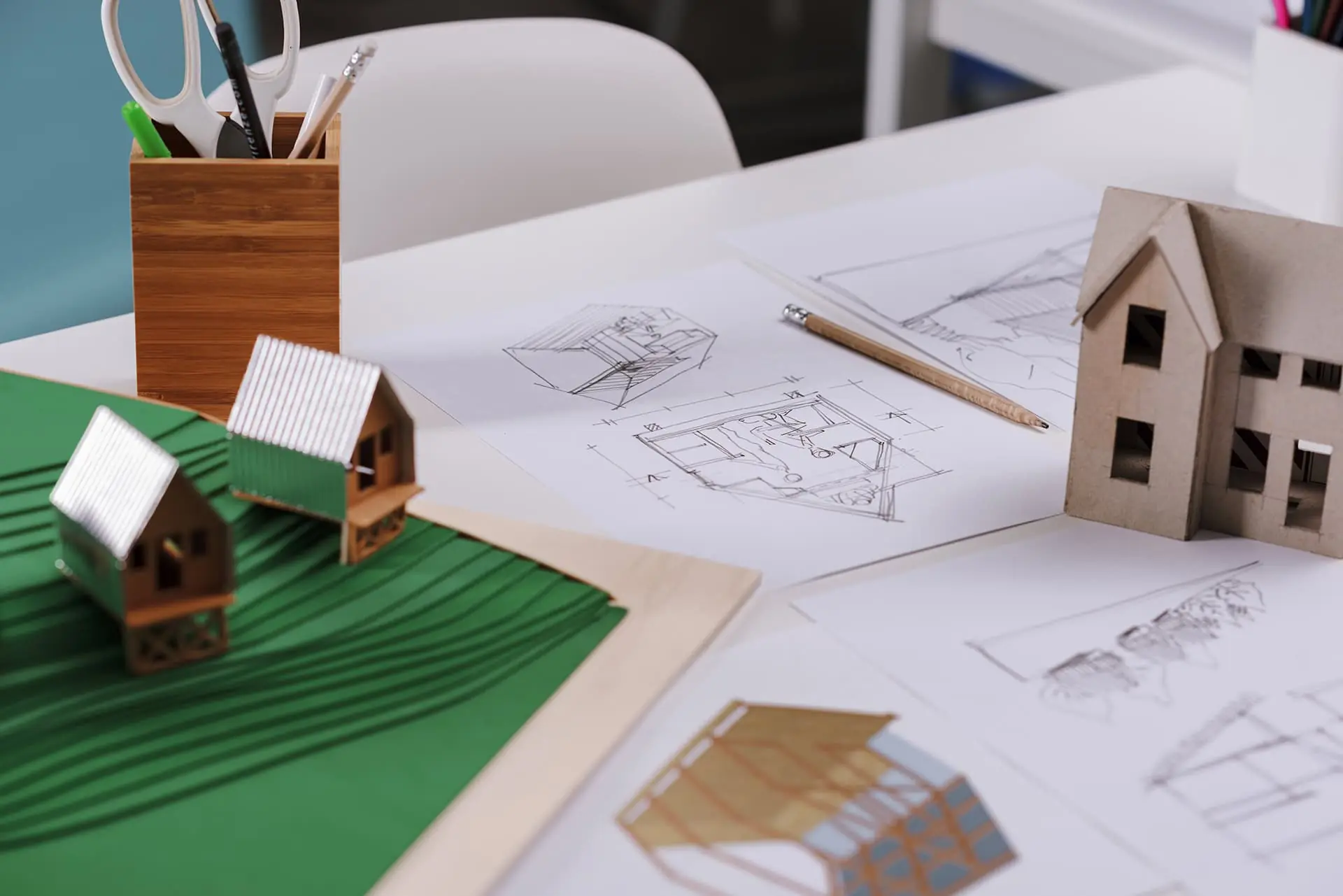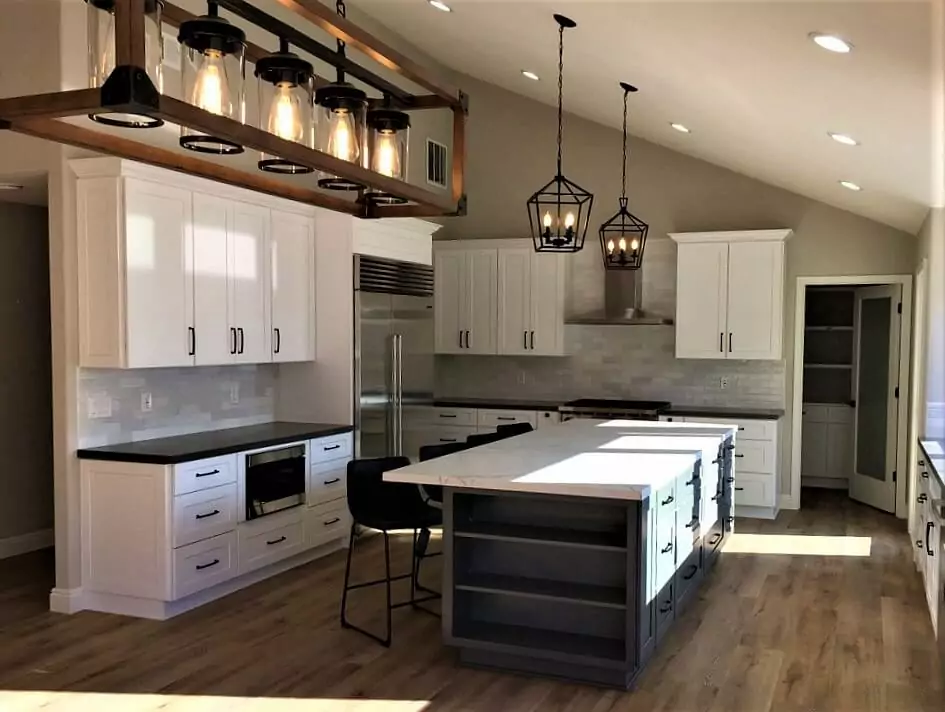
Kitchen Cabinet Storage Solutions
Think that something is off about your kitchen layout but cannot put your finger on exactly what? Aren’t you excited about your moderately sized kitchen and want to make it more functional and spacious? Want to have more usable counter space in the room where you generally hone your culinary skills in the evening? If you answered YES to any of these questions, your kitchen is defiantly poorly organized and you, apparently, don’t know about the golden kitchen storage rule – a so-called sink stove refrigerator triangle.
The concept of this rule is pretty simple: a kitchen’s three primary activity areas (the sink, the fridge, and the stove/range) should form, obviously, a triangle. Elements in the glorious kitchen triangle orient traffic flow within a kitchen, thus ensuring an optimal rotational movement between task-specific zones: cooking (an oven), washing/peeling (a sink), and storing (a fridge). So, in plain words, it is all about smart kitchen storage and organization.
And once you learn to apply this rule, you will enjoy a better kitchen that is eye-pleasing, obstacle-free, and highly convenient at the same time. We will teach you that lesson to group your kitchen storage around three main workspaces.
Three Essential Zones of Kitchen Storage
Refrigerator Area
Your refrigerator is a grand and, perhaps, the most important appliance in your entire house because it preserves the freshness and safety of your products and meals. It is the first kitchen zone involved in food preparation.
It is the first kitchen zone involved in food preparation. Mind these tips to make the storage area around your refrigerator utterly useful and bottleneck-free:
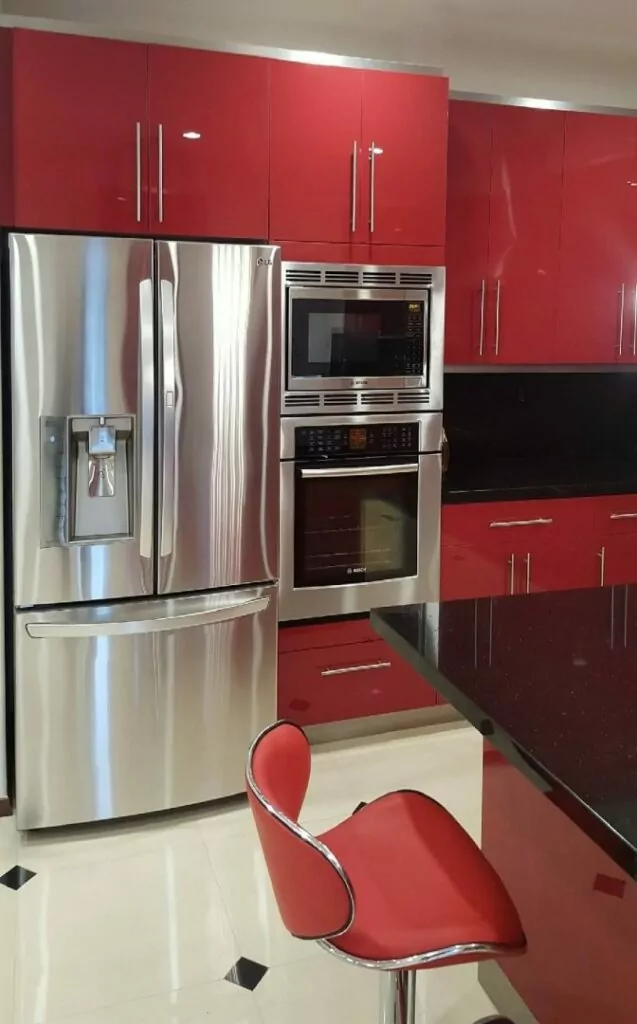
- Position your fridge near the entrance to shove groceries into right the moment you come in.
- An optimal variant is to position a countertop/kitchen island next to or across from the fridge so that you will have convenient space within easy reach to place your bags and sort groceries out. Such a location of a countertop/ island also allows having cereal boxes, canned goods and other dry foods always at hand.
- Making your staples easily accessible will also facilitate your preparation routines. Apply the spot around your refrigerator for housing a mixer, a blender, food processor, coffee machine, a can opener, a toaster, mixing bowls, measuring miscellany, sifters, trays, salad molds, cups, and other utensils requisite for dry goods. It makes sense to provide yourself with a spacious (at least, 500 cm3) pantry pullout cabinet for dry food storage somewhere in the fridge zone, too.
- What about a built-in appliance garage near the fridge station? This kitchen must-have will save you from countertop clutter while helping to easily accommodate bulky appliances.
- Obtain a medium-sized closet and put it near your refrigerator to store a broom, a dustpan, and a mop but make sure, this cabinet doesn’t block traffic flow around your kitchen.
Sink Area
The region around your sink and dishwasher is the second most important kitchen storage space. This so-called sanitary point should be found between the fridge and the cooktop/range for utmost efficiency. Since a sink is the heaviest used appliance in any kitchen, it should better take up a central position.
A countertop in the sink zone should be maximally uncluttered. The space in and around the sink is used for meal-preparation activities including washing, peeling, and chopping as well as sorting out the mess after eating. Put garbage and recycling bins under the sink to ensure effortless trash disposal.
Kitchen cabinets in the sink area should be allocated for all sorts of tableware, glassware, and flatware. There also should be separate storage for dishtowels, cleaning essentials, as well as drying and polishing utensils.
Cutting boards and knives should be placed in the middle between your travel from the refrigerator and the sink. By doing so, you can easily access these things from the fridge, use them for intended purposes, and quickly wash in the sink as well as throw all the leftovers to the garbage/recycle containers under the sink.
Though it is a common practice to store glassware in wall cabinets beside the sink/dishwasher, you will not go wrong if you use a drawer as a location for drinking glasses, wine glasses mugs, and cups. Since glass and ceramics are quite fragile materials, store your glassware upside down on a nonslip rubber drawer liner for better protection.
When planning kitchen storage and organization, it is better to find a way to store items which are directly related to each other. For instance, cups are better to be positioned near a coffee machine.

Range Area
The place around your stove is meant for cooking and serving meals. These functions determine the position of a range – near the dining room. All items involved in the prep workflow must stand in the stove/cooktop center.
As for an oven and a countertop, you should locate them beside or closely across to each other so that you will have sufficient space to put down hot items quickly and safely. Potholders, trivets, and other supplies for handling hot kitchenware must also be within obvious proximity to the stove and oven.
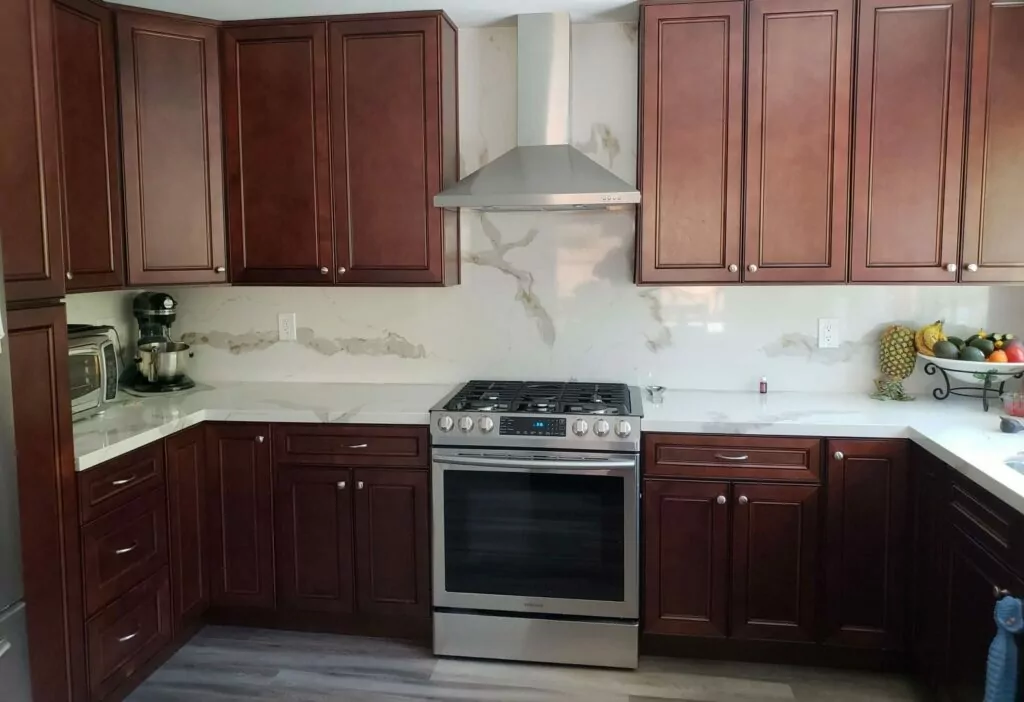
Allot some space of the range zone for plates, bowels, and other dishes which can aid to deposit the prepared food to the dining table.
It will not hurt to dedicate a separate kitchen cabinet for storing different cookware which you use on the stovetop and another cabinet – for keeping bakeware for the oven. A microwave oven, a waffle maker, and other warming appliances also belong exactly to the range center as well as breadboards and bread bins.
The stove zone is also home to spices, pots, and pans, and they can be stored both in the upper cabinets/shelves and in drawers/pullout cabinets standing on the floor – this entirely depends on your personal preferences.
A triangle concept is still the best way to design your kitchen and make storage utterly practical. Since your kitchen has three distinct functions – cooking, washing, storing – it is reasonable to organize three self-contained work areas where every kitchen zone will everything which relates to the particular kind of activity. It means that the cooking zone should contain all attributes you would possibly need to prepare meals: measuring pieces, pots, pans, and whatsoever, and all this stuff should be located beside both your pantry and the stove. Your “wet” zone has everything you need to clean up dishes and ingredients: mops, sponges, dishtowels, disposal bins, household chemicals, etc.
A classic kitchen triangle is a great way to properly organize storage in your kitchen but do not think it is the only principle to rely on. While assessing the traffic flow, you may find out that a triangle does not fit your particular kitchen layout, but take it easy. Like any rule, triangles can be broken or transformed into another figure (especially, if you have more working zones in your kitchen – a bar, for example). And never forget: it is possible to create a fiendishly functional and appealing kitchen without frills just by having a proper layout and useful cabinets.
Turning to the Groysman Construction Remodeling Company, the experts will help you implement the best solutions.


